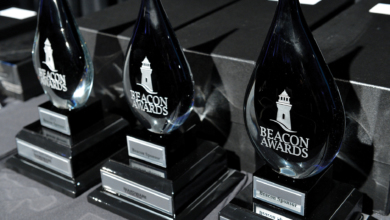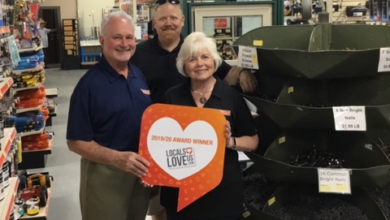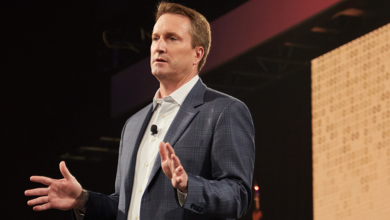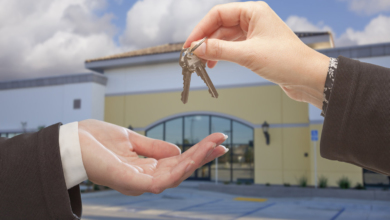Leading Lumber
Q&A: Thought Leadership

Industry veteran Russ Kathrein, Do it Best’s vice president of lumber and building materials, talks about developing the next generation of leadership, LBM trends and how Do it Best is staying competitive in a challenging market.
Russ Kathreinbegan his career in the lumber and building materials industry when he and his brother purchased and rebuilt their father’s lumber business. With decades of experience, Kathrein has held leadership roles at companies such as 84 Lumber and former Builders FirstSource affiliates. Most recently, he served as CEO of a large independent LBM dealer, overseeing 12 locations across Illinois, Iowa and Wisconsin. Through his leadership roles, Kathrein gained extensive expertise in sales, management, purchasing and operations, along with a deep understanding of the LBM dealer’s perspective.
In 2020, Kathrein joined Do it Best as a Business Development Manager, bringing more than 30 years of industry knowledge with him. By 2021, he had advanced to Vice President of Lumber and Building Materials, where he focuses on partnering with dealers to support growth through innovative buying programs and services. He has served on the board of the National Lumber and Building Materials Dealers Association.
Here, Kathrein talks with Hardware Connection about the state of the LBM industry and how Do it Best is poised to make strides within the building materials sector.

HC: What’s the overview of the current LBM landscape?
Kathrein: In talking with our LBM members, we’re kind of seeing that year to date, businesses are down about 8 percent. The volume is down. The consumer segment is trending better than the construction segment. I had a dealer who has a couple different yards. His consumer yards are doing better, whereas construction is not. I think part of it is interest rates. Part of it is that it’s an election year where people don’t want to commit. In terms of trends in the business, in lumber, we’re seeing the Canadian log supply—what we call fiber basket—really start to get constricted, and that’s changing the dynamics. Whereas the Canadian market supplied the majority of the wood, which we call SPF [spruce-pine-fir], now it’s Southern yellow pine that’s being grown in the United States on the manufacturing side.
HC: What are some LBM trends you see shaping the near future?
Kathrein: I think there’s a willingness to go out and be more aggressive for the business, be more creative. During Covid, if you could make it, you could sell it. And now people are like, “Oh, darn, it’s not that easy.” On top of it, you had a 10-year period where money cost nothing. Now it costs money to sit on inventory. The good companies are being smart and trying to aggressively build the business.

HC: What challenges are Do it Best members facing in the lumber and building materials marketplace?
Kathrein: The big boxes aren’t as big a challenge as they think. Maybe on some of the manufactured items, but LBM is still high-service. We can be competitive. When I say we, that’s a majority of our people. What I’m hearing is it’s just really hard to find people. For the smaller businesses, it’s hard to find the next generation that wants to own the business. The sons and daughters don’t want to work weekends. I’m not saying they’re lazy; they’re just looking at work-life balance. They see their parents spending 70 hours a week at the store and don’t want to do that.
HC: You have decades of leadership in the industry. How can the next generation of leaders in the LBM sector be developed?
Kathrein: Developing leaders is more of a long-term commitment. Every generation has unique needs, and I think established leadership needs to figure out how to press the right buttons for the next generation to motivate them and develop them as leaders. The younger generation wants to see a career path. The Boomer generation would just say “Put your nose down, work hard, everything will work out well.” That’s not a good selling point. In terms of developing leadership for my generation, we have to alter the way we do things. If you’re going to coach and develop future leaders, tell people you believe in them. The power of saying “I believe in you” is huge. And then the second thing: Let them fail. You’ve got to let these people fail—feel the pain of failure and learn from it.
HC: How would you characterize the status of the LBM supply chain? Are there any potential snags ahead?
Kathrein: The Canadian supply chain is getting smaller and smaller. They can’t absorb growth like they used to. In the past, if we had a big bump in growth, the Canadians would step up and just produce more wood. What’s interesting is the Southern yellow pine, which is made in the United States and has really come into its own. The fiber basket is growing. However, you can’t just substitute. Southern yellow pine is a different product. It’s harder, heavier and sturdy. But it also tends to warp quicker in the sun. People used to using Canadian SPF are discovering Southern yellow pine. There’s this kind of emotional connection, but once you switch, you switch. We’re seeing the U.S. product take over more of the market, and the Canadian product less. As a matter of fact, the Canadians are buying U.S. Southern yellow pine mills, and that’s how they’re growing their business. Another factor in the LBM supply chain is wood coming from Europe, which is equivalent to Canadian SPF. That’s become a bigger factor.
HC: How has the sustainability movement affected the LBM industry?
Kathrein: There was a big move 10 years ago. First off, though, we are the ultimate environment sustainability business. When we cut down a tree, we plant trees. It’s good forest stewardship. There’s a classic photo of Mount St. Helens, where half of it was government land and half of it was owned by Weyerhaeuser. Within three years, Weyerhaeuser planted trees, and it looks like a forest with seedlings coming up. On the U.S. government side, which is Bureau of Land Management, it looks like the moonscape.
HC: What’s the role of technology in the future of building materials, procurement and management?
Kathrein: The manufactured product is going to take more and more space in the marketplace, and that would include engineered lumber, OSB [oriented strand board], where we’re not relying on a big log that we can peel and make veneers. Instead, we’re cutting small logs making laminated veneer lumber [LVL]. It’s a stronger and better product. So that’s a technology on the manufacturing side. On the design side, you’re seeing ways to design with less waste. Technology also figures into the business in terms of analyzing data better and understanding how inventory’s moving, what customers are buying. The lumber industry and the hardware industry have been notoriously slow to adapt. I think we’re finally coming out of that cave and inventing fire.

HC: On the LBM side, how is Do it Best helping its members address the labor shortage?
Kathrein: Our member services help in all sorts of ways. We’ve always done marketing, but anything where we can provide a service and let the member spend more time customer-facing is a positive. We do some of the purchasing chores for them. We run a lot of technology where we can help them determine what they need. Whereas before somebody would walk around the store floor or the lumberyard and just look for empty shelves and empty bins. We’re trying to use technology where members won’t have to have a big purchasing or inventory staff, or HR and marketing staff. We’re exploring that. We also sit down the members and analyze annual purchasing reports. It’s a strategic discussion where we find ways to get rebates and combine volume for purchasing power. I always call that discussion “What money are you leaving on the table?”
HC: Are you seeing members who weren’t previously offering lumber and building materials stepping into that market?
Kathrein: Surprisingly, yes. I think hardware stores that have property are learning that they don’t have to be a big, full-service lumberyard but can still sell consumer lumber. And we offer different ways to do it. So, yes. Every market is different. You need to talk to your community and find out where the need is. If you’re going to sell to remodelers, it might be OSB and 2×4 studs. If you have a big home and garden department and people in your area are building decks, it’s going to be treated lumber. But it doesn’t mean you have to have both.










